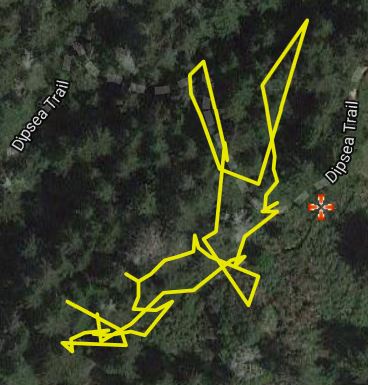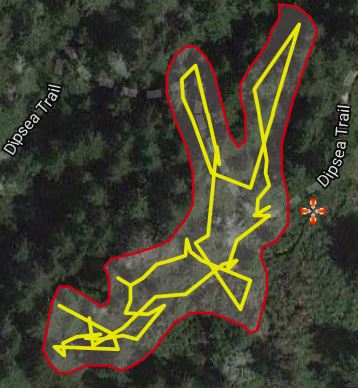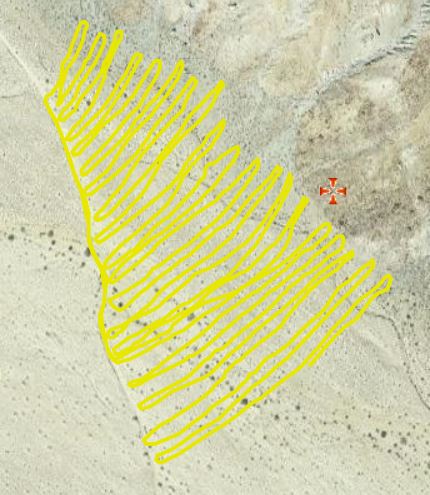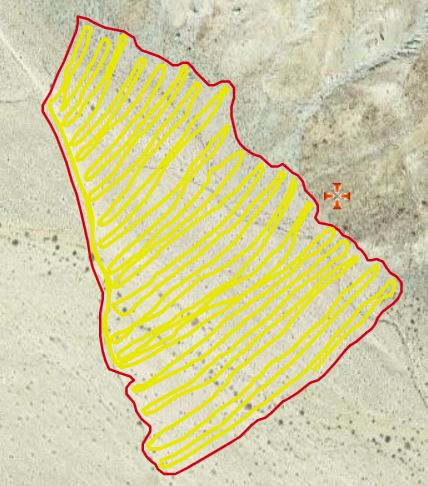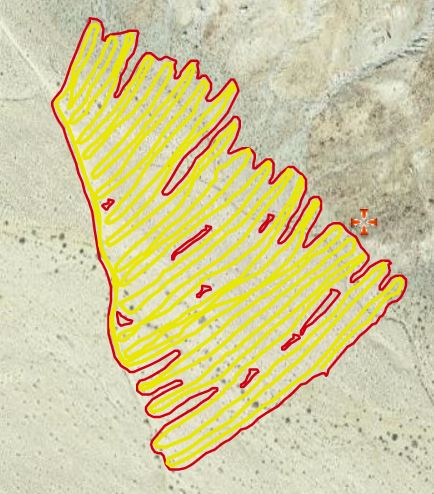| |||||||||||||
|
Updated February 16, 2024
|
If you have questions about using this application, please contact Calflora support. Survey Entry is part of the Weed Manager system. See also Survey Workflows for a discussion of how some groups have used surveys. |
||||||||||||
| About the Application | |||||||||||||
|
With the
Survey Entry
application you can view, enter or edit a survey record.
A survey is a search for certain plants in a discrete area at a certain time. To enter a survey record, you will need to specify the area, the date, and a plant list. For each plant in the plant list, you can indicate whether or not you found it, and if you did find it, how abundant it was.
Area
Plant List
|
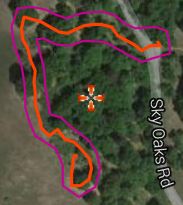
|
||||||||||||
| Adding a New Record | ||
|
1. Press NEW RECORD. 2. Choose an Group. (If you are not a member of any groups, choose Independent.)
3. Set a point location for the record.
  . .
4. Add a polygon to the record.
To draw a polygon, press  |
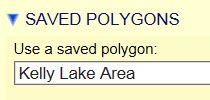

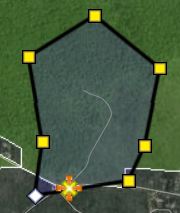
|
|
|
5. Enter a Name for this survey. The values of Observer and Date will already be filled in. If necessary, change these values: set Date to the date of your last visit to the area. 6. If you have already defined a plant list containing the plants that should be in this survey, choose it by name from the Reference Plant List drop down. 7. Go to the PLANT LIST tab.
8. Go to the RECORD DETAIL tab, and enter values for any relevant fields. All of these fields are optional. (See below for more information.) 9. Press SAVE. Required values are indicated by *. If any required field values are missing, the application will let you know. |
||
| Overview | ||
| The right side of the page is devoted to a map. The left hand side is scrollable, and organized into several sections. | ||
| Basic Fields | ||||||||
| Group | The organization responsible for this record. If you are a member of any Calflora groups, they will appear here in a drop down during editing. The default group is Independent. | |||||||
| Access by others |
|
|||||||
Shape  |
 indicates that a polygon is defined for this record. indicates that a polygon is defined for this record.
| |||||||
Point Location  |
 indicates that a point location is defined for this record. indicates that a point location is defined for this record.
| |||||||
| * Name | The name of this survey. | |||||||
| * Observer | The person(s) who did the survey. When adding a new record, this field is filled in with your name. | |||||||
| * Date | Date when the survey was complete, in the form YYYY-MM-DD. For example, 2016-12-31. | |||||||
| Reference Plant List | If you have already defined any plant lists, you can choose one here. | |||||||
| Specifying a Polygon | ||||||||
|
Every survey record requires a polygon. There are several ways to add a polygon to a survey record.
Drawing a Polygon
Using a Saved Polygon |
||||||||
| Adding a KML Track | ||||||||
|
In the Shape section,
open  UPLOAD KML TRACK UPLOAD KML TRACKWhen the KML has successfully uploaded, the CHOOSE A LINE tab opens, showing all of the lines that were in the file. Click on the ID of a line to choose it and display it on the map. |
||||||||

|
||||||||
| Open the EDIT THE LINE tab. Press to edit the line before converting it to a polygon. If there are many erroneous vertices, check |
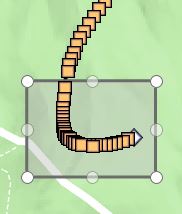
|
|||||||
| When the line is ready, open the MAKE A POLYGON tab. Choose a Buffer distance, and choose whether you want to allow the software to introduce holes in the generated polygon. (Note that polygons that have holes are not editable in this application.) Then press . If you need to, press to edit the polygon. Note: If you have KML file that contains a polygon, you can upload it here and just use the polygon. If you have a KML file that fails to load, please send it to us in an email and we will adjust the algorithms to make sure that kind of KML will load in the future. | ||||||||
| Polygons Generated from Lines | ||||||||
Here are some examples of polygons generated from lines.
Note that the choice of a buffer distance (meters) is related to how far the observers could see -- well enough to identify plants -- on either side of the their path. In series 1 above, the terrain is hilly oak woodland, so 5 meters is appropriate. In series 2 above, the terrain is flat desert, so 10 meters is probably more appropriate than 6 meters.
Note that in 2C above, where the buffer is at 6 meters,
the user checked |
||||||||
| Finding your Survey Records | ||
|
Once you have entered a survey record, you can find it in
My Observations.
It may be easier to find it if you
check only surveys / checklists.
If the survey is published, you can also find it with the Checklist / Survey Search application. This application is particularily useful for finding surveys owned by a group. |
||
| Survey vs. Checklist | ||
|
The concept of a survey is very similar to that of a checklist,
in that both are associated with an area and a plant list.
But where a survey happens over a very discrete time interval,
perhaps just one day, the time element of a checklist is much more
fluid. For instance, a checklist might represent all of the plants
an observer has seen in an area during multiple visits over the course
of several years.
(Since some plants are only identifiable at certain times of year,
a really comprehensive checklist necessarily involves multiple visits.)
With this application, you can distinguish between a survey and a checklist by setting the value of the field called Method (as in the method you used to assemble the information). The date on a survey record indicates the date that the survey was complete. For a checklist where there were multiple visits to an area, it is the date of the last visit. |
||
| RELEASE NOTES | ||
|
• May, 2020: v. 1.30 released. If you are adding plant names from another document in the PLANT LIST tab, it now accepts free text containing plant names. Using this method, each plant name does not have to be on a line by itself. • May, 2019: v. 1.09 released. • May, 2019: v. 1.07 released. This release includes the ability to see lines and polygons of the observations that are part of this survey. It also includes the Region field in the RECORD DETAIL tab. In the OBSERVATIONS tab, observations are sortable in either ascending or descending order. • March, 2019: v. 1.03 released. • May, 2018: v. 0.94 released. • July, 2017: v. 0.76 released. • June, 2017: v. 0.70 released. • April, 2016: v. 0.60 (beta) released.
| ||
 Open
Open
 Open
Open
